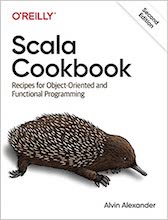Table of Contents
- Linux shell script test syntax
- Linux shell file tests
- Linux shell string comparison tests
- Linux shell script math/number equality tests
- Linux shell boolean and/or/not operators
- More powerful grouping operators
- Linux Bourne shell if, then, else, else if (elif) syntax
- Bourne shell for loops
- Linux Bourne shell arithmetic
- A few other common Linux shell tricks
This is my Linux shell “cheat sheet.” I use it as a reference page, primarily when I’m writing Unix/Linux shell scripts. Most of the syntax works with the Bourne shell, though some operators make only work with Bash.
Linux shell script test syntax
All of the shell script tests that follow should be performed between the bracket characters [ and ], like this:
if [ true ] then # do something here fi
Very important: Make sure you leave spaces around the bracket characters.
I’ll show more detailed tests as we go along.
Linux shell file tests
To perform tests on files use the following comparison operators:
-d file Test if file is a directory -e file Test if file exists -f file Test if file is an ordinary file -r file Test if file is readable -w file Test if file is writable -x file Test if file is executable
As an example, assuming you have a file named foo, here’s how you would test to see if that file is readable:
if [ -r foo ] then # do something here fi
Linux shell string comparison tests
Here are the operators for performing string comparison tests:
s1 Test if s1 is not the empty string s1 = s2 Test if s1 equals s2 s1 != s2 Test if s1 is not equal to s2 -n s1 Test if s1 has non-zero size -z s1 Test if s1 has zero size
Here’s an example of how to see if two strings are equal:
if [ $foo = $bar ] then # do something fi
This script echoes TRUE:
s1= if [ -n $s1 ] then echo "TRUE" else echo "FALSE" fi
This script echoes FALSE:
s1=bar if [ -z "$s1" ] then echo "TRUE" else echo "FALSE" fi
Those tests also showed the else syntax of the if statement.
Linux shell script math/number equality tests
Here's how you perform math/number/arithmetic tests using the Bourne and Bash shells:
n1 -eq n2 Test if n1 equals n2 n1 -ne n2 Test if n1 is not equal to n2 n1 -lt n2 Test if n1 is less than n2 n1 -le n2 Test if n1 is less than or equal to n2 n1 -gt n2 Test if n1 is greater than n2 n1 -ge n2 Test if n1 is greater than or equal to n2
Here's an example of how to test whether two numbers are equal:
if [ $n1 -eq $n2 ] then # do something fi
Linux shell boolean and/or/not operators
The following boolean and/or/not operators can also be used in your tests:
-a and -o or ! not
Here's an example of how to test perform a test using the and operator:
if [ $num -gt 0 -a $num -lt 10 ] then # do something here fi
More powerful grouping operators
If you need to perform multiple tests at one time you can use grouping operators, as shown in the example below.
a=5 b=20 if test \( $a -gt 0 -a $a -lt 10 \) -o \( $b -gt 0 -a $b -lt 20 \) then echo "TRUE" else echo "FALSE" fi
That script echoes "TRUE".
Linux Bourne shell if, then, else, else if (elif) syntax
One thing that varies from one programming language to another is the if / then / else / else if / elseif syntax. In the case of the Bourne shell, the "else if" keyword is actually "elif", so a sample Bourne shell if then else if statement looks like this:
if [ -e 'foo' ] then echo "if was true" elif [ -e 'bar' ] then echo "elif was true" else echo "came down to else" fi
(Thanks to the commenter below for suggesting this addition to this page.)
Bourne shell for loops
Here are a couple of examples of the Bourne shell for loop syntax. First, this one shows how to process every line a file:
file=myfile.txt
# handle line breaks properly; needed when a line has spaces or tabs
IFS=$'\n'
for i in `cat $file`
do
# add your logic here
echo "$i"
done
Next, this for loop example shows how to run the sbt clean command under every directory that is a subdirectory of the current directory, but only if the build.sbt file exists in those subdirectories:
for d in `ls -d1 *`
do
cd $d
# only run 'sbt clean' if this file exists
if [ -e build.sbt]
then
sbt clean
fi
cd -
done
As shown in those two examples, the Bourne shell for loop syntax is this:
for ...
do
# do whatever you want
done
Linux Bourne shell arithmetic
In the Bourne shell math/arithmetic is performed using the expr command, like this:
sum=`expr $foo + $bar` half=`expr $foo / 2` times=`expr $foo \* 2` # increment a counter (( count++ ))
Note that you can't have any spaces before or after the equal sign in those (or any) shell script assignment statements.
A few other common Linux shell tricks
Here are a few other tricks/techniques you will often see in Unix shell scripts:
cmd1 && cmd2 Run cmd1; if it returns 0 (success), run cmd2 cmd1 || cmd2 Run cmd1; if it returns non-zero, run cmd2 cmd1 & cmd2 Run cmd1 and also cmd2 (ls -1) Run the command "ls -1" in a subshell



